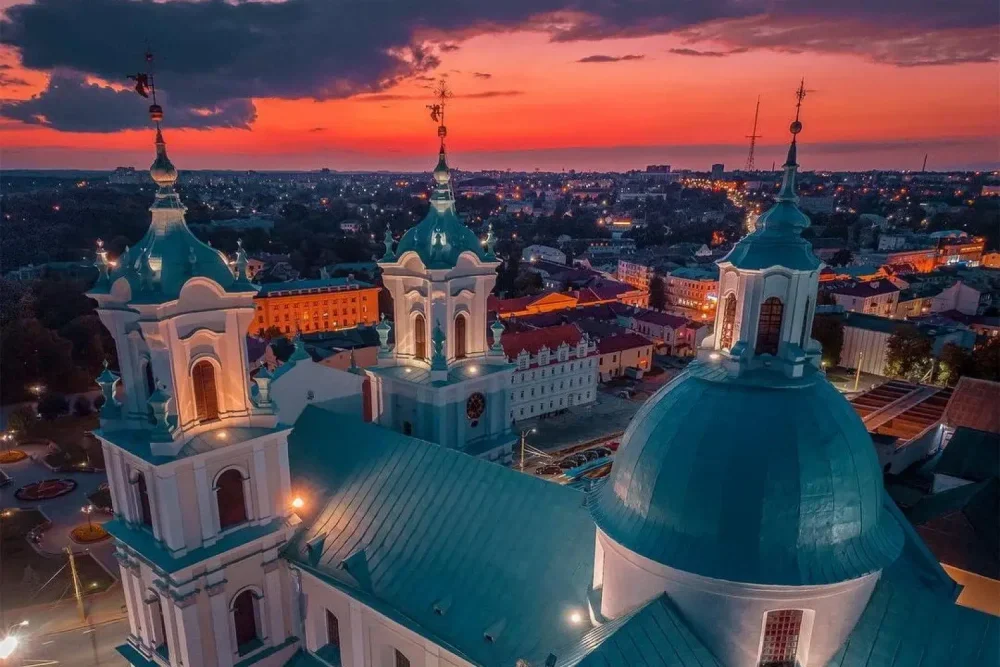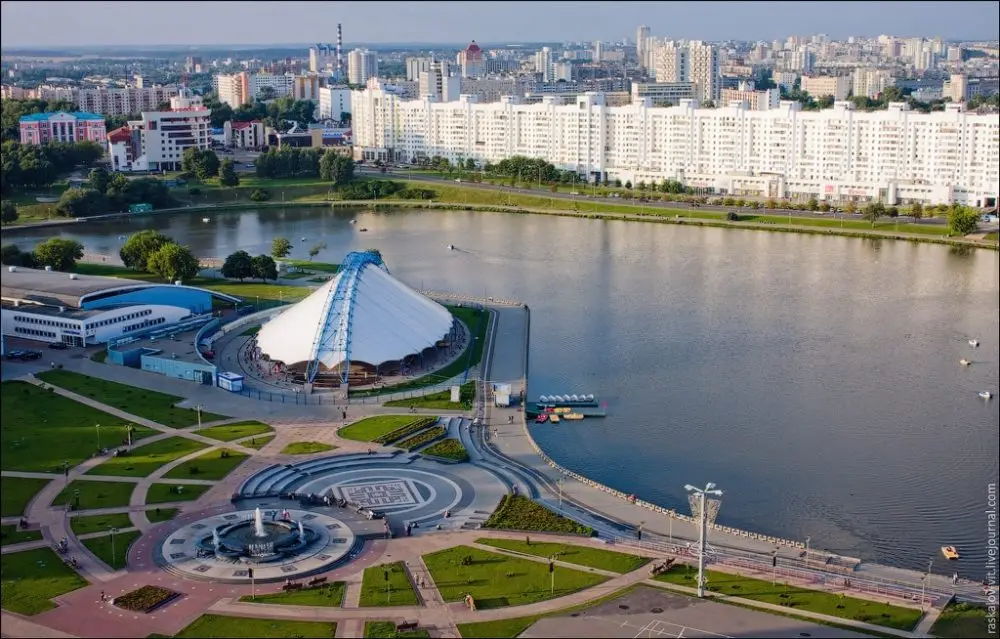The land of castles and reserves is not the most obvious choice for travel, but it is increasingly popular. The ecologically clean nature, affordable prices, and diverse landscapes make it attractive for short weekends as well as full-fledged vacations. However, tourists naturally wonder: when is the best time to travel to Belarus to get the most out of the trip and avoid periods of unpredictable weather or high tourist traffic.
Weather in Belarus: How Does Climate Affect Your Vacation?
The Belarusian climate is moderately continental, with all four distinct seasons. The winter is snowy but relatively mild, the summer is warm and humid, while spring and autumn are transitional, with moderate temperatures and weather fluctuations.
Temperature and precipitation levels may vary depending on the region. Overall, the weather in Belarus by month is quite stable: extreme temperatures are rare, but seasonal characteristics should be taken into account when planning a trip.
When to Travel to Belarus for Vacation: Choosing the Best Time by Month
It all depends on the type of activities you prefer. Winter months are suitable for trips to ski resorts. Spring and autumn are ideal for sightseeing routes when nature is particularly expressive. Summer is the peak of tourist activity and offers the best conditions for countryside vacations, fishing, and agro-tourism.
Winter: Ideal Period for Skiing, Holidays, and Seclusion
In winter, the temperature ranges from -5 to -10°C, sometimes dropping to -15°C. It’s a suitable time for winter enthusiasts. Ski resorts in Logoisk and Silichi offer infrastructure for skiing and family leisure. Winter is also the season of Christmas fairs and cultural events in Minsk and Grodno.
The low tourist flow makes winter a good time for those who prefer travel without crowds. Accommodation prices are lower outside of holidays, and there are no queues at attractions.
Spring: Interseason for Excursions and Nature Observation
From March, it gradually warms up, with temperatures rising to +10…+15°C in April and +18°C in May. It’s the time of nature awakening. Blooming forests, riverbanks, national parks – an excellent destination for birdwatchers or excursions in Belarus while it’s not too hot.
Spring is especially good for trips to Belovezhskaya Pushcha and Berezinsky Biosphere Reserve. Here you can see rare species of animals and plants unique to the European part of the continent. In May, cultural events and outdoor concerts start. If you’re considering when to travel to Belarus for vacation, spring is an excellent choice for those who want to combine nature, tranquility, and a rich cultural program.
Summer: Peak Tourist Season and Countryside Getaways
Summer months are when vacations are most active. The temperature stays around +22…+27°C, occasionally rising higher. It’s the best time for relaxation by the lakes (Naroch, Svityaz), river rafting, cycling routes, and visiting agro-estates.
When is the best time to enjoy Belarusian nature? Summer is ideal for those who want to explore nature and visit historical landmarks in Mir, Nesvizh, Polotsk. However, the number of tourists in summer is at its highest, especially in July and August.
Autumn: Golden Season and Comfortable for Travel
September is a gentle continuation of summer, with temperatures up to +20°C. October is cooler but vibrant with the colors of forests and parks. It’s a favorable time for leisurely trips, gastronomic tourism, and cultural routes. Autumn is also considered a good period to travel to Belarus to see its architectural and natural heritage in a peaceful setting.
Precipitation becomes more frequent in October-November, temperatures drop to +5…+10°C, but there are fewer tourists, and the infrastructure remains accessible.
Best Months for Different Types of Vacation: When to Visit Belarus?
When deciding when to travel to Belarus for vacation, consider what activities interest you. Below are guidelines for planning:
- months for nature – May and September: warm, fresh, comfortable for walks;
- for beaches – July and August: maximum water and sun temperatures;
- sightseeing tours – April, May, October: optimal weather and tourist flow;
- ski vacations – January and February: the most snow and stable weather;
- holiday trips – December: Christmas market atmosphere and events.
This breakdown will help you choose the best season for vacationing in Belarus based on your preferences.
Periods to Avoid When Planning Your Vacation
While Belarus is suitable for travel year-round, there are months with less predictable weather and limited activity options.
- March – unstable weather, possible rain and slush;
- April – rapid warming, often accompanied by sharp temperature fluctuations;
- November – minimal sunny days, high humidity;
- second half of October – leaf fall, weather swings, shorter daylight;
- first half of December – little snow, lack of holiday atmosphere.
Understanding these natural nuances helps avoid disappointments and plan your vacation wisely according to the climate.
When to Travel to Belarus for Vacation: Key Points of Interest by Season
For a precise choice of travel time, it’s important to consider not only the weather but also the events happening in the country. These can be festivals, national holidays, cultural events, or natural phenomena. Popular events and activities by season:
- summer hosts folk festivals, music open-airs, and fairs on the lakes;
- autumn features a medieval culture festival in Mir, gastronomic tours;
- winter offers Christmas fairs, ski tournaments, castle quests;
- spring includes ecological and cultural festivals, May weekends in manors.
Such events can be an excellent addition to your trip, giving it a thematic richness.
The Green Heart of Europe is Suitable for Travel Year-Round
When deciding when to travel to Belarus for vacation, it’s essential to consider the combination of weather, season, and trip goals. The country offers various vacation formats throughout the year: from skiing to cultural routes and eco-tourism.
The optimal time depends on preferences: winter is suitable for peaceful relaxation and snowy landscapes, summer for active tourism, spring and autumn for thoughtful trips focusing on culture and nature.
A well-chosen period is the key to a comfortable and fulfilling vacation in the heart of Eastern Europe!
 en
en  ar
ar  de
de  es
es  fr
fr  nl
nl  ru
ru  hi
hi  it
it  pt
pt  el
el 



